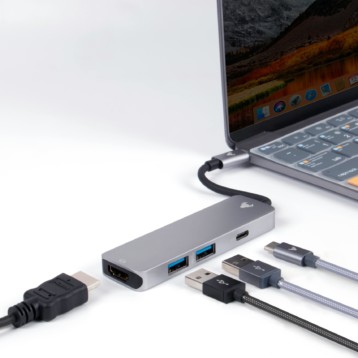PRK and LASIK are laser surgery methods used to improve eyesight. PRK has been in existence for a long time, but the two are still broadly utilized today. PRK and LASIK are utilized to change the eye cornea. The cornea has five slim, transparent covers of tissue over the front of your eye that retracts (or bends) and concentrates light to enable you to see. LASIK and PRK use various approaches to correct your eyesight by reshaping cornea tissue.
With PRK, your surgeon removes the epithelium then uses lasers to restructure the other cornea layers and address any irregular curves in your eye. With LASIK, your eye surgeon utilizes a tiny blade or lasers to create a tiny flap in your cornea. The surgeon then raises the flap and utilizes lasers to restructure the cornea. After completing the surgery, your surgeon lowers the flap back down, and the cornea fixes itself over a few months. Every technique can resolve eye problems related to astigmatism, nearsightedness, and farsightedness.
If you’re wondering which surgery technique to consider, this article is for you. It has more information about PRK and LASIK surgeries.
The differences between LASIK and PRK
The significant difference between PRK vs LASIK is the procedure or eye preparation. In both surgeries, you’ll be given deadening drops, so you feel nothing during the surgery. Also, you’ll get an oral sedative to relax. During a prk surgery, the upper layer of the cornea is lightly brushed off to permit access to the area of the eye; your surgeon will restructure the excimer laser. The removed outer layer will rejuvenate and fix itself naturally during the healing process.
With the LASIK procedure, your surgeon will use an Intralase femtosecond laser to create a hinged flap on the face of the cornea. They will then raise the flap to reach the portion of the eye the excimer laser has manipulated. Then, the flap is realigned after the treatment is complete.
The major corrective part of the procedures is the same. Once your provider for example eye surgery in Сhicago accesses the deeper cornea tissue coat, they will use a remarkably accurate laser to fix your particular anomalies or refractive correction in the eye. This part of the process takes roughly 30-60 seconds. The laser technology utilized in the two surgeries will result in similar outcomes.
The recovery from the two surgeries is somehow different.
PRK recovery
With PRK, a specific bandage comparable to a contact lens is put above the eye to assist the surface of the cornea layer in redeveloping and healing. This unique bandage is put on immediately after the procedure is completed. Your surgeon removes the lens once the surface has re-healed. As your eyes recover and you wear the bandage contact, you’ll have functional vision. You may experience some sensitivity to light, blurriness, or irritation for some days as the cornea recovers. After a few days, your PRK surgery provider will remove the bandage and give you some pain medicines to swallow for the day or two following the procedure. Also, you’ll be utilizing eye drops.
The initial healing takes a few days. The eyesight stabilizes but is exceedingly efficient after that initial recovery. Although total healing can take roughly a month, many patients can recommence routine activities after removing the bandage lens. Your healing should slowly improve daily throughout the healing process.
LASIK recovery
With this technique, the hinged flap is only realigned. Your eyesight can be significantly better and more efficient before leaving the office. You might experience some mild burning and soreness for some hours after surgery. You’ll be given eye drops and pain medications to utilize after the procedure.
Between PRK and LASIK, which is costly?
With the LASIK technique, the surgeon uses two lasers, one that creates the flap and another that restructures the cornea. With PRK, only one laser is used, which restructures the cornea. This makes prk surgery cost slightly lower.
If you’re asking whether insurance covers LASIK and PRK, the answer is no, as they are elective surgeries. However, you can use FSA funds and HAS funds for the surgeries. It’s tempting to seek the cheapest options, but your sight could be at risk. The best centers for eye surgery in Сhicago partner with patient payment programs to lower costs for their patients.
Which surgery is better?
There are distinct advantages to the two corrective eye surgeries, and in specific cases, one technique might be better than its counterpart.
LASIK pros
- Quick recovery
- No bandages or stitches required
- Fewer follow-up appointments or medicine required
- Less risk of infection
- No need to get off work after surgery
PRK pros
- It suits people with a thinner cornea
- No danger of complications with the cornea flap
- Low chances of long-term complications
- Also, prk surgery cost is lower
How to know which surgery is right for you
You have lots of information about PRK and LASIK, but don’t rush. It’d help if you consulted your eye doctor to establish which surgery is the safest alternative for you.










